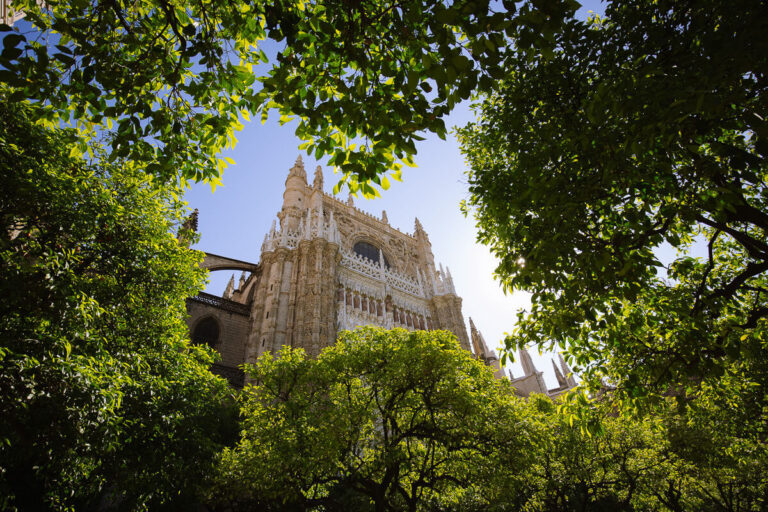London on a budget: 15 cheap travel tips
“But isn’t London super expensive?” has got to be the most common question I get asked as an ex-city boy when talking about travel to the United Kingdom’s capital. And, while it might be a surprising answer, I always reply that cheap may be a stretch – but London on a budget? Absolutely!
There are heaps of tips and tricks you can follow to cut your costs and make a stay in one of England’s best places to visit more affordable. Take it from an ex-local who survived in this city as a waiter for more than a few years, you can make your pound go much further if you know how.
Of course, all the usual stuff applies; visit in the off-season, avoid dates when huge events mean prices spike, and consider hostels or further-out accommodation. But, rather than focusing on the obvious that can apply anywhere, I’ve tried to focus more on London-specific tips and ways I’ve personally tried to do London on the cheap while living here.
So before even thinking about all the best things to do in London – including all these fantastic free museums – here are some of the budget basics you need to know when planning and during your trip.
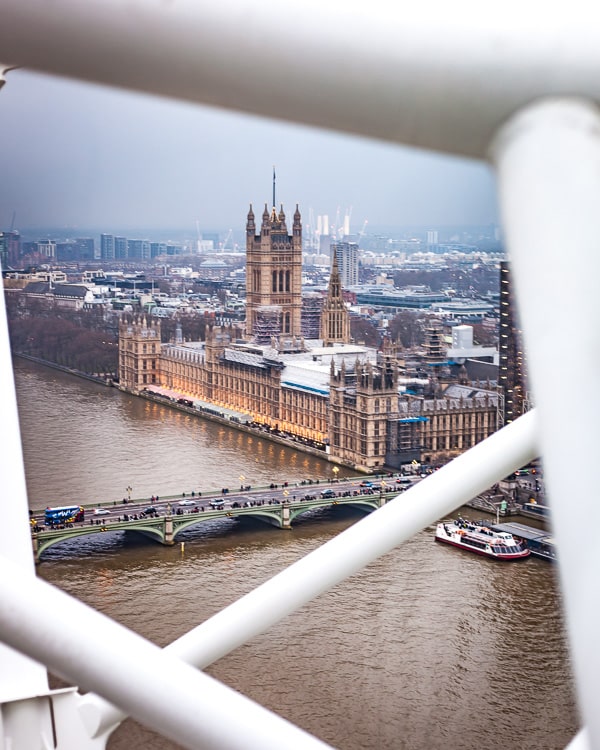
1. Flying to London (or not)
Firstly, let’s look at the most significant initial cost: flights. London has two major airports (Heathrow and Gatwick), one city-centre airport that mainly caters to business travellers (London City), and two further large airports (Stansted and Luton), which mainly serve European and budget flights. There’s also London Southend Airport, which I’ve used once for a package holiday; however, it’s tiny, and far away, so I will ignore it here. To be fair, most of these airports aren’t really in London, so how you get into the city centre from these airports (see point 5) is also a cost to factor in.
So, the first thing you’ll want to do is search for cheap flights to all of these airports. Skyscanner is great for this, as you can put in your starting point and then ask it to search for flights to London (Any) and see which airport is most cost-effective. You can even search for a whole month, or from all your nearby airports, to find more options.
If you’re coming from Europe, then chances are that budget carriers like Ryanair (mainly Stansted), and easyJet (mainly Luton and Gatwick) will offer the cheapest fares. Just keep in mind that on these no-frills airlines, luggage and certain extras do cost more, so factor these in.
From further afield, such as Australia or the USA, you may want to consider other options. While a weekend in London will mean you will want to fly directly to the city, if you’re instead using London as a starting point to explore Europe’s hidden gems, it may be cheaper to start and end your trip elsewhere on the continent.
I have travelled to Amsterdam or Rome to take long-haul flights in the past because it has been up to £250 cheaper each way. London has high taxes, and direct fares are not always that competitive, so look at flying into a different European city first, saving some bucks for a night or two there and then jumping on a budget flight – or a Eurostar train – to London. Alternatively, look at airlines which offer ‘stopover’ deals or connecting flights, as these can also be cheaper to reach the UK while also allowing you to see another city. Two well-known options include TAP Portugal’s Lisbon stopover and Norway-based Norse, which launched in 2021.
If you’re coming from the United States and want to visit London on a budget, you might also want to sign up for one of the cheap flight email services to be notified when deals or error fares are available. I’ve also written in detail about how to find cheap flights using Skyscanner.
You can also use your flights to save money on accommodation if you book an overnight arrival and late-night departure – essentially giving you two full days. There are loads of places to ditch your luggage for the day if your hotel or apartment doesn’t offer this service. LuggageHero is pretty cheap and has lots of different storage locations.
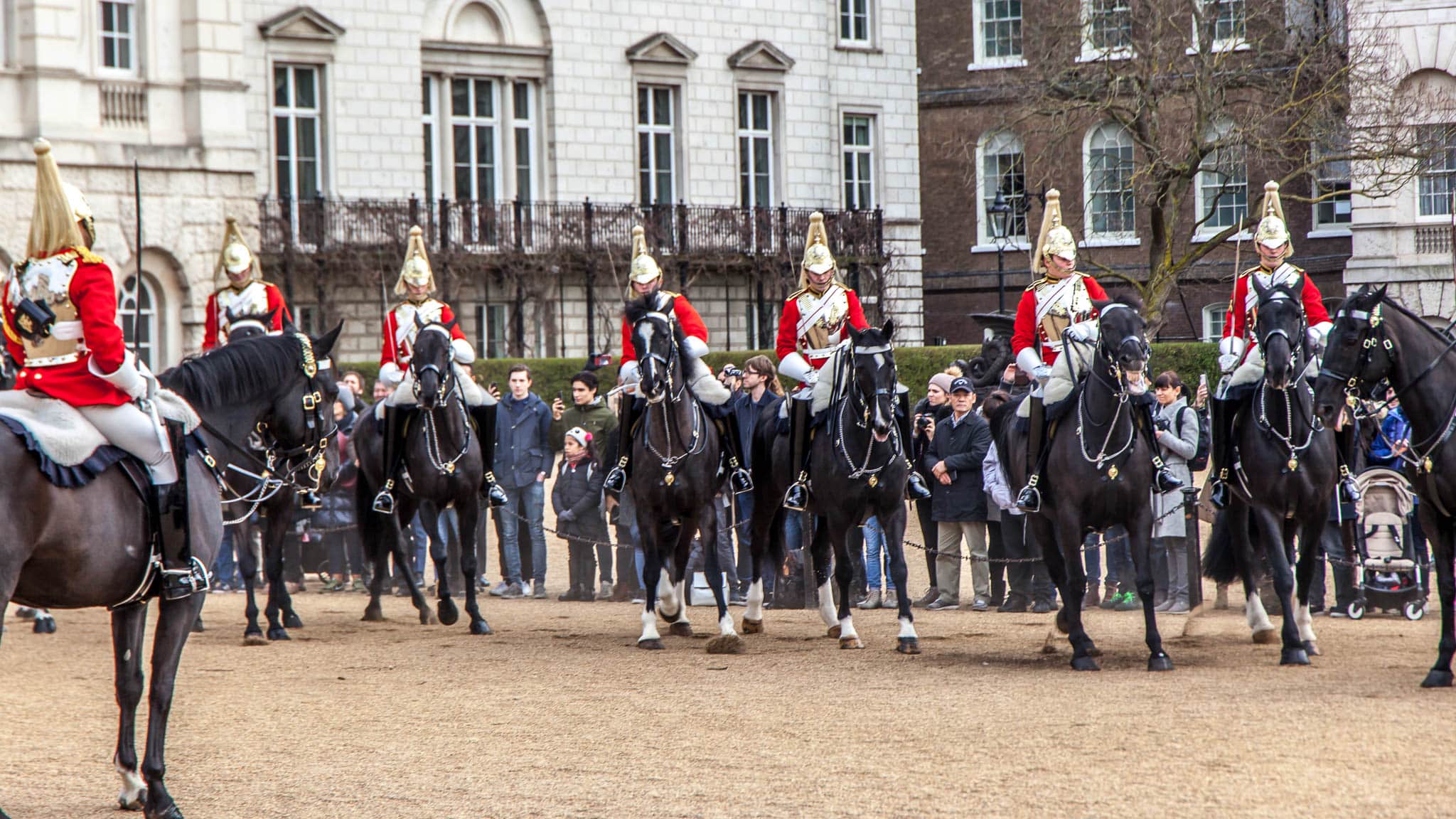
2. Book your tickets and activities in advance
When you’re planning your cheap trip to London, you’ll likely have already made a list of all the attractions and activities you want to visit. Of course, many of these will not cost a penny, such as seeing the Changing of the Guard or visiting a free-entry museum; however, the reality is not everything will be so wallet friendly.
So, to reduce and manage these costs, look for deals and discounts so you can book as many activities as possible in advance. You may assume that booking directly will guarantee the best prices, and while this is true most of the time, it isn’t always the case. There are plenty of coupon and discount websites in the UK, and you can often find some of the capital’s best attractions listed with deals.
Some websites worth checking before booking include Voucher Codes, which shares discount codes to use at checkout, and Groupon, which has both discount codes and deals on certain activities and hotels. For theatre tickets, consider websites such as Love Theatre – but also keep in mind day tickets and the West End lottery mentioned below. If you’re travelling to London by train, you can also usually get decent attraction deals on National Rails’ Discount website when using your train ticket.
You might also want to consider one of the various London Passes. Some bundle 2-7 attractions together for a discount, while others are for specific periods and include transport. I know these are really popular for websites to recommend as they pay us a nice commission fee for each sale; however, they are only cost-effective if you really make the most of them.
So, consider what attractions you will certainly see in London – many museums and galleries are free – and then work out if one of these passes will actually save you money before buying it. If it will, great, snap it up. If you only plan to visit one or two attractions, it might be better to book separately and find deals on those specific activities.
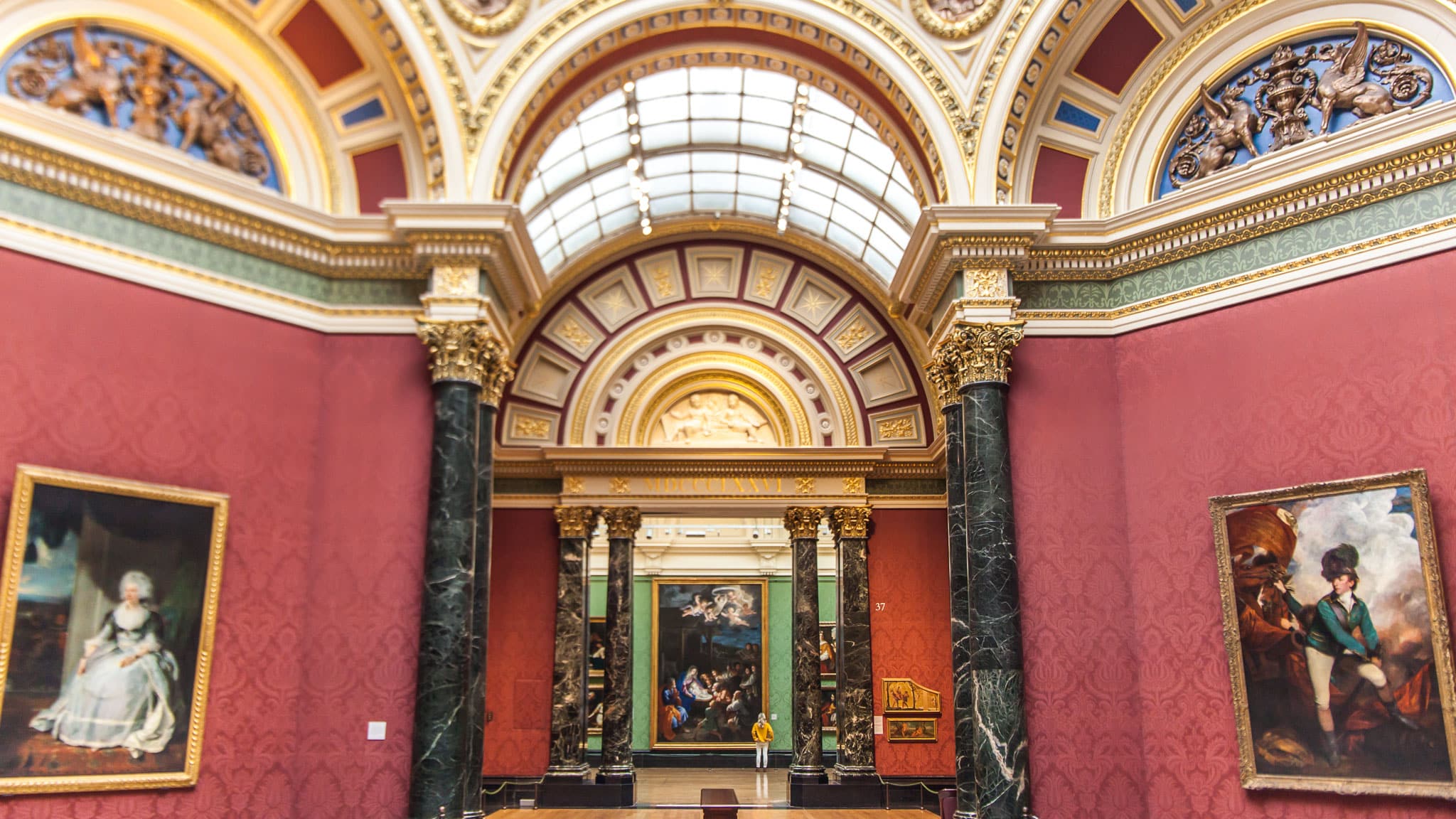
3. Finding affordable London accommodation
Whatever search engine you use, I promise you one thing: cheap does not usually mean cheerful in London. Whilst there can be some bargains to be found the further out you go, you’ll have slim pickings in central London.
As well as searching on hostel or hotel comparison websites like Trivago, take a look at the websites of budget hotels such as Tunes, Easy or The Z, which usually offer central accommodation at a fairly reasonable price and will guarantee a certain standard of hygiene and facilities. Also, some budget hotels, such as Premier Inn, aren’t listed on comparison websites and should be searched and booked directly.
Alternatively, stay further out and use it to your advantage. London is a super-connected city, and we even have a night metro on weekends now so that you can rent any one of London’s high-quality short-term rentals and you won’t miss out on a thing. The bonus of staying in zones 3 and 4 is that not only is accommodation usually cheaper, but food and drinks can also drop dramatically in price, and you’ll get a more ‘local’ experience.
If you plan to stay in London for more than a night or two, you might also want to consider housesitting. This tends to work best for slightly longer stays – sometimes a week or more – as you’ll be looking after someone’s home (and potentially pets or plants) while they go on holiday themselves.
There are a few different platforms which help potential sitters and hosts connect. Many of these platforms require a subscription, so you may want to read a firsthand TrustedHousesitters Review before making the initial payment. However, once you’ve secured your first housesit – especially in a city like London – the savings will quickly add up.
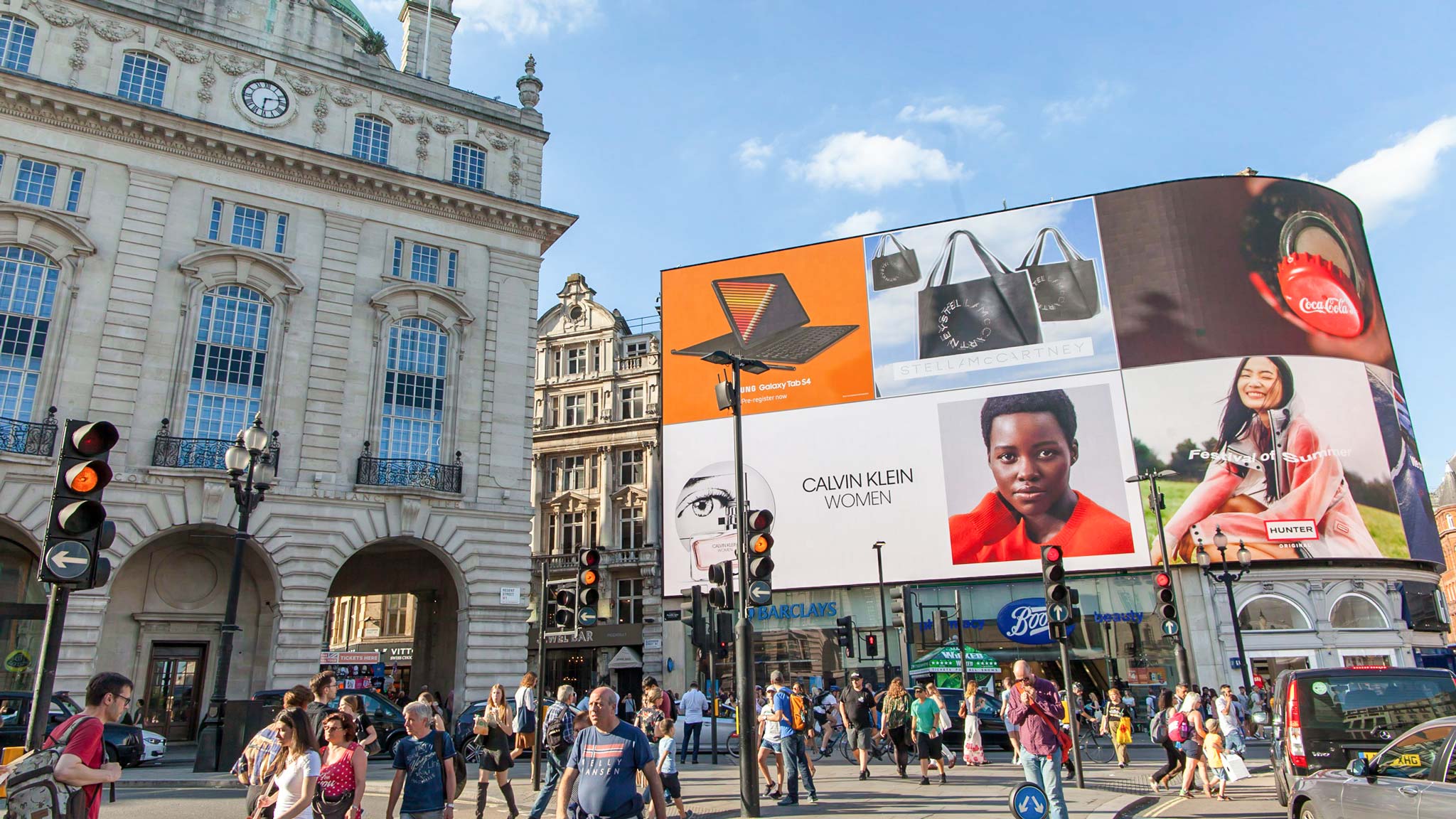
4. Rent a car only when you need one
It might be tempting to rent a car the second you arrive in London, especially if you’re planning to explore other parts of England or road trip Scotland, but if you’re looking to do London on a budget, this isn’t wise. Firstly, you just won’t use your car much when you’re in the city, and secondly, by the time you account for car parking and any congestion charges, those costs will rack up.
As such, it’s better to pick up your car on the day you plan to start your road trip. Alternatively, if you want some wheels for the day to head off to a few nearby places, consider a service like Ubeeqo. This car-sharing website offers easy access via an app to local cars by the hour or day, already including fuel and insurance. They have around 100 parking locations in London, and cars can be rented as far afield as Hertford or Cambridge, so it saves on train fares if you’re staying outside the capital and driving in, or vice versa.
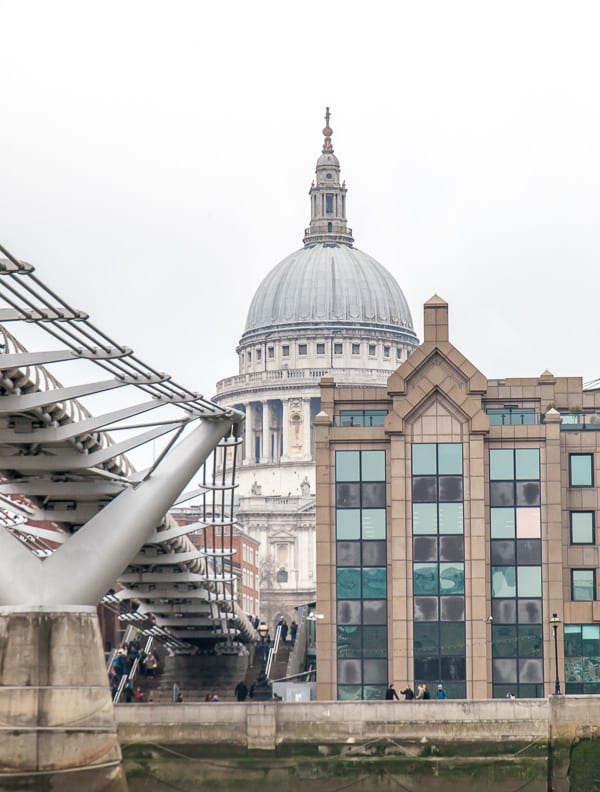
5. Don’t get scammed on your airport transfers and trains
“Express Trains” are not something you will find me on. Often, these services only shave a few minutes off the journey time and come at a hefty premium, and there are much more cost-effective ways to reach London’s centre.
These express trains operate from Gatwick, Heathrow and Stansted, so when you’re planning how to reach the capital itself, compare the prices and timings of these services with the regular routes – you’ll be amazed at how much extra you are paying when the difference can be as little as 10 minutes. That said, the express services offer some advanced tickets at a heavily reduced price, so it’s always worth checking to see if you can book one of these.
From London City and Heathrow, you can also use the tube or DLR – Heathrow even has access to the new Elizabeth Line – as these are usually cheaper than rail. National Express coach services from Luton or Stansted can also be cost-effective alternatives depending on the time at which you arrive. The bottom line is there are plenty of options, and depending on where in the city you are staying, the express trains might not be the most direct or cheapest option to arrive to London on a budget
6. Walk, cycle and get contactless
London may seem scarily big when you look at a map – or especially a tube map – but walking around central London actually does not take too long. In fact, walking between some tube stations can be quicker than taking the metro when you add up all the time. So, my tip to you is that when the weather is good, do as much of London on foot as possible.
We also have the Santander Cycle scheme – standard and e-bikes – which you can find dotted around the city and access with an app or bank card. While these aren’t as cheap as they once were – standard bikes now cost £1.65 per 30 minutes – they offer a really nice way to get around London. If you’re planning to stay in the city a while and make heavy use of the scheme, the £20 monthly option may be appealing.
You may have heard of the Oyster card, which is cheaper than buying individual travel tickets for the underground and bus network as it has a capped daily price and cheaper individual fares. Thankfully, this benefit also applies to paying with a contactless credit card, so you don’t need to purchase an Oyster card to enjoy the same price cap. If using a foreign card, you’ll just want to check that your bank will not add an additional exchange fee each time; if so, get the Oyster or find a better travel card such as Wise or Revolut.
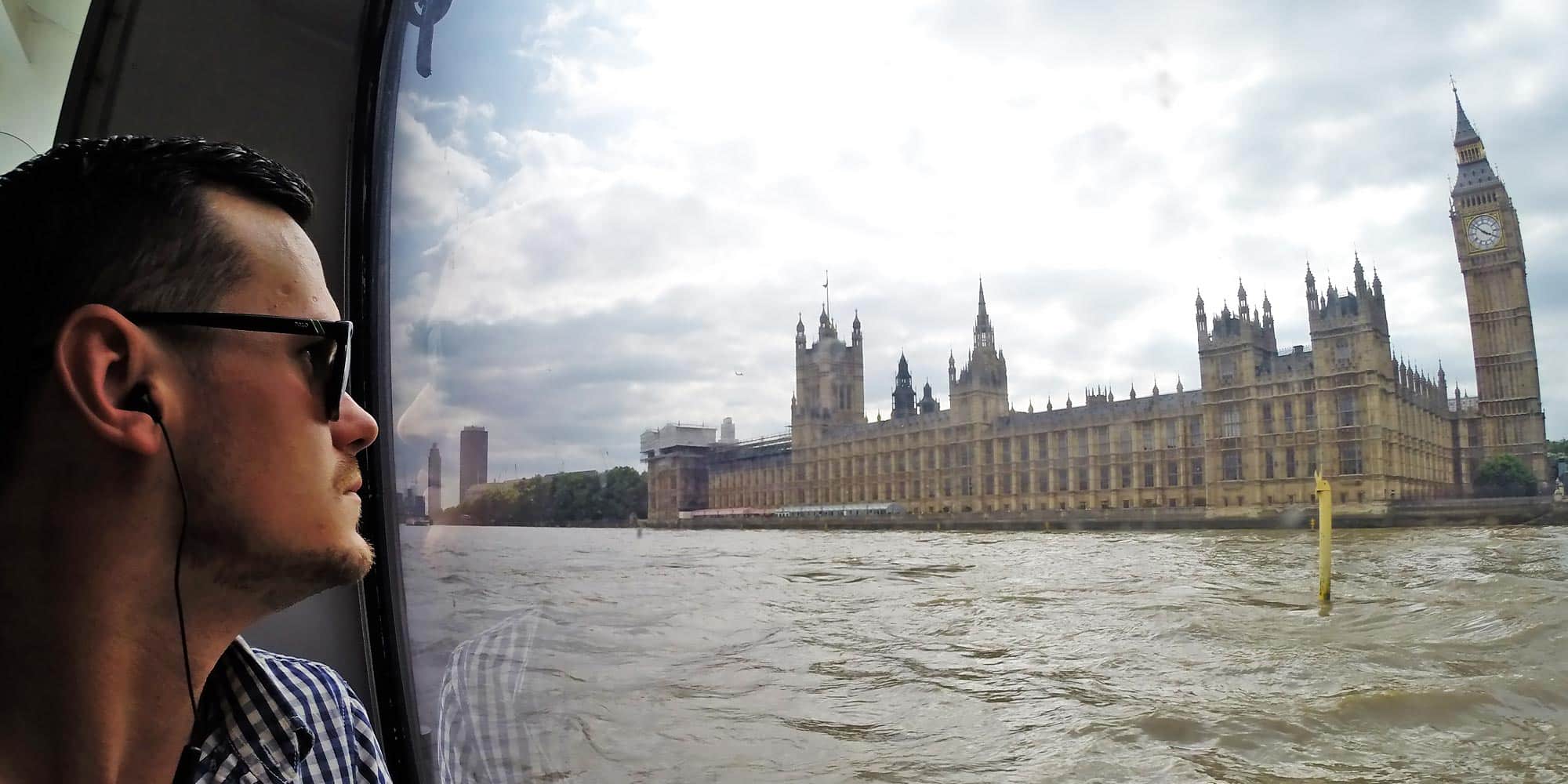
7. Use public transport for sightseeing
Public transport in London is pretty decent and a daily occurrence for most of us, so if you are from a country/city that requires a car to get around, forget it – TFL can become your best friend when visiting London on a budget.
While the Tube is great, if a little crowded, heading underground will mean missing some of the best Instagram spots in London. So, make use of the buses and sit on the top deck to get that hop-on hop-off tourist feeling without spending a fortune.
If you want to experience the River Thames without paying for a river tour, then you’ll want to make use of the Thames Clipper, London’s public ferry service. From as little as £4.80 for a standard single – or £18.90 for a full-day pass – you can take a jaunt along the river and spot some of the city’s most famous attractions on the way.
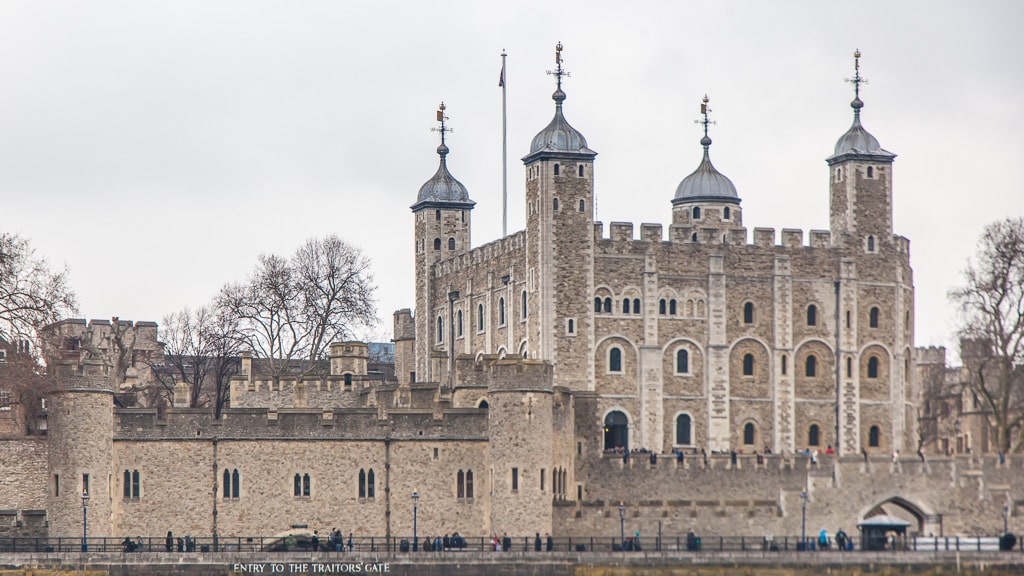
8. Check out the free attractions
London may be an expensive city, but many of the best attractions actually cost nothing. Learning how to travel the world for free is a fine art, and here you have plenty of it to practice.
Some of London’s best free attractions and museums include the British Museum, St Paul’s Church (not the cathedral), The Tate, The National Portrait Gallery, strolling through Covent Garden, people watching at Borough Market (I know a lot of people recommend this for cheap eats, but in reality, many stalls are quite boutique) and taking in the views from Greenwich. There are also plenty of beautiful parks to enjoy.
Then there are the cultural attractions such as watching the Changing of the Guard, exploring the street art in trendy neighbours such as Shoreditch and heading up to one of the free rooftop viewpoints such as One New Change and the Oxo Tower – they might not be as high as The Shard, but they are a lot cheaper!
9. Skip the Shard and get views for free
The Shard may be the most famous of London’s skyscaper viewing platforms, but it’s not the only option.
My favourite spot is actually found across the river – the bonus is you can see The Shard – in the SkyGarden. Not only will you get some far-reaching vistas across London’s best landmarks, but the space is incredible, with plenty of inside foilage.
You do need to book your visit online in advance to get free access – the tickets are batch released every Monday – but that little bit of forward planning will save you the same cash. Alternatively, you can book a table at one of the restaurants, but this turns one of London’s best free attractions into a more pricy experience.
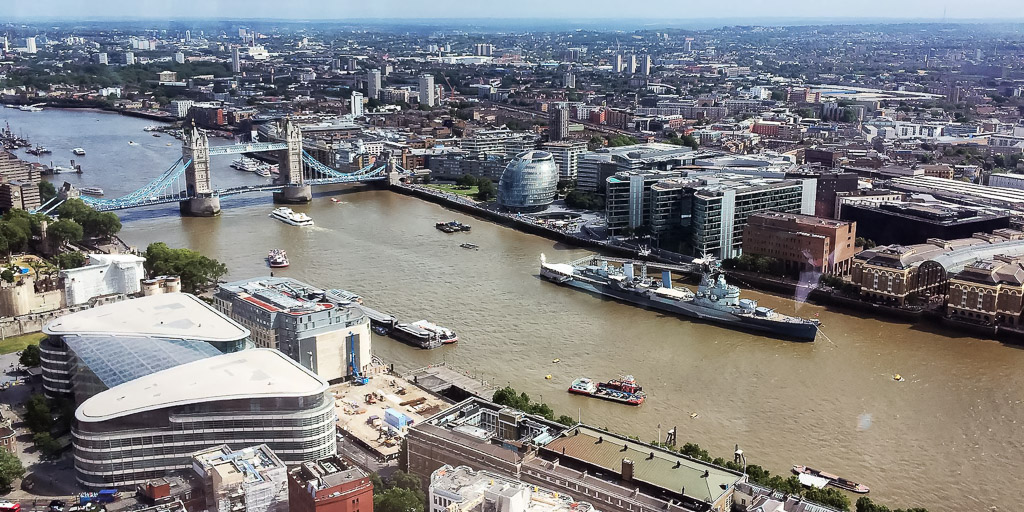
10. Look for free events and gigs in London
London’s cultural scene is all-encompassing, and there is no denying this is one of the best cities in the world for music, arts, theatre and other creative pursuits. Thankfully that means there are plenty of free – don’t forget to drop some coins in appreciation – events to enjoy throughout the year.
Keep an eye on websites like Secret London, which keep a decent and up-to-date calendar of free events in London so that you can plan ahead – or go last-minute – to an extraordinary event. They cover anything from buskers in Covent Garden and free Royal Opera House performances to church choir performances and Friday night parties at the Tate Modern.
11. Chain restaurants are not the enemy
Yeah yeah, I’m probably going to get slated for saying this – especially as someone that loves supporting independent businesses – but there are some pretty decent chain restaurants in the UK which can provide affordable deals in decent locations, ideal for a quick, easy and affordable lunch.
Some of my favourites include Pizza Express (they often run 2-for-1 deals), Wahaca for Mexican food, and chain pubs such as Greene King or Fullers for decent-priced British grub and pints. Most of these chains have apps with discount deals. For a slightly more upmarket option with good-quality British dishes, head to one of the Browns Bar and Brasserie’s across the city, the restaurant group where I worked for many years.
If you’re going to spend a while in London, then the Taste Card may be worth considering as after a certain amount of uses, the discounts will more than pay for themselves.
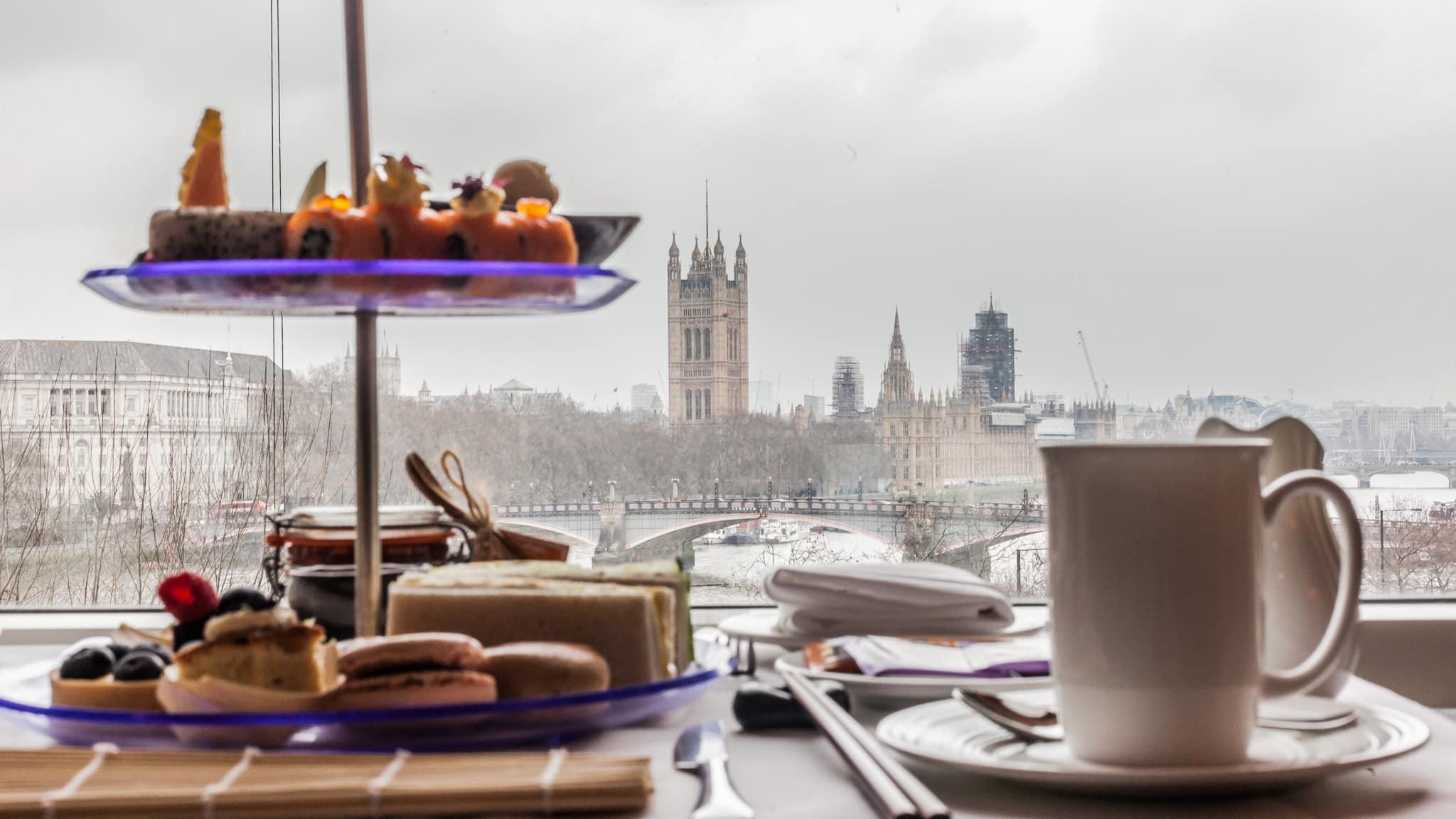
12. Hunt out set menu deals
Set menus, especially on quieter evenings (like Sundays or Mondays) and during lunches are pretty common in London. These are the times when restaurants are not too busy, and you’ll most likely find the best deals.
If you have a restaurant you really want to visit whilst you are here, call or check the website to find out if they offer a set menu – it will usually save you a fair chunk on the À la carte price.
Do keep in mind that the locations you are looking at will likely change the available deals. For example, in financial districts such as the City of London or Canary Wharf, lunches are usually their prime time with office workers meaning deals aren’t likely during weekday lunches. On the flip side, in the Theatre District and around Soho or Covent Garden, Prix-Fixe menus are usually early evening to get diners in and out quickly before a show.
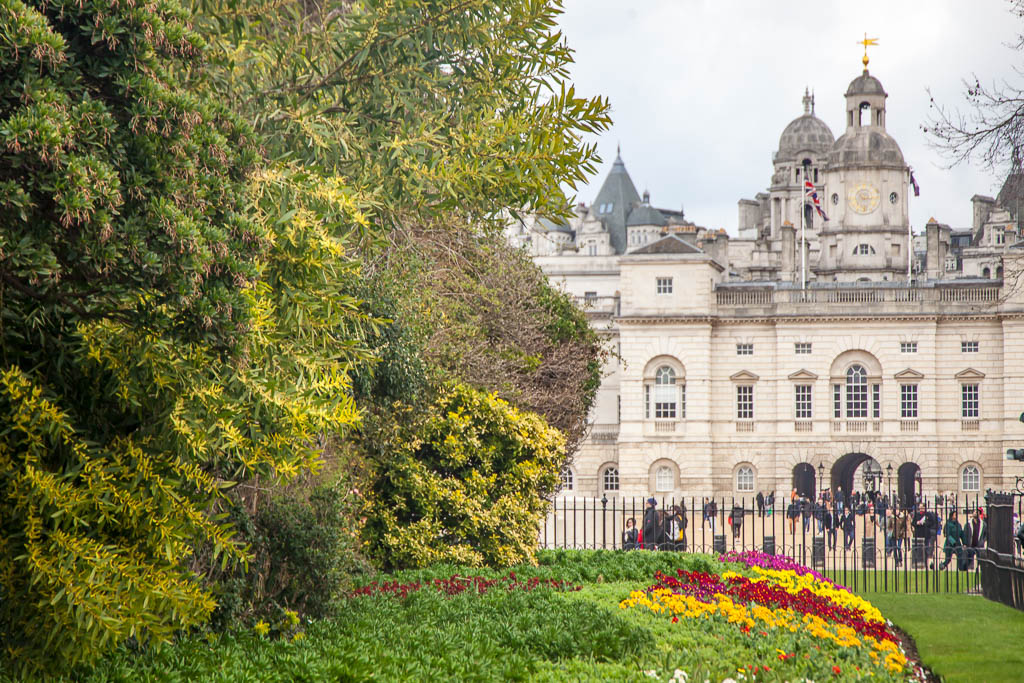
13. Picnic on a meal deal
If you want to go super cheap – and generally ‘live like an office local’ – then grab yourself a meal deal. It’s not exactly fancy, but it’s a way to cut your travel costs and do London on a budget.
These simple lunch deals are something of a staple in the UK and are offered in places such as supermarkets and even health retailers such as Boots. Usually costing between £3-£4, you can grab a sandwich, crisps (or fruit and other snacks) and a drink. Take these to one of the beautiful parks in London, and you have a bargain picnic lunch on your hands.
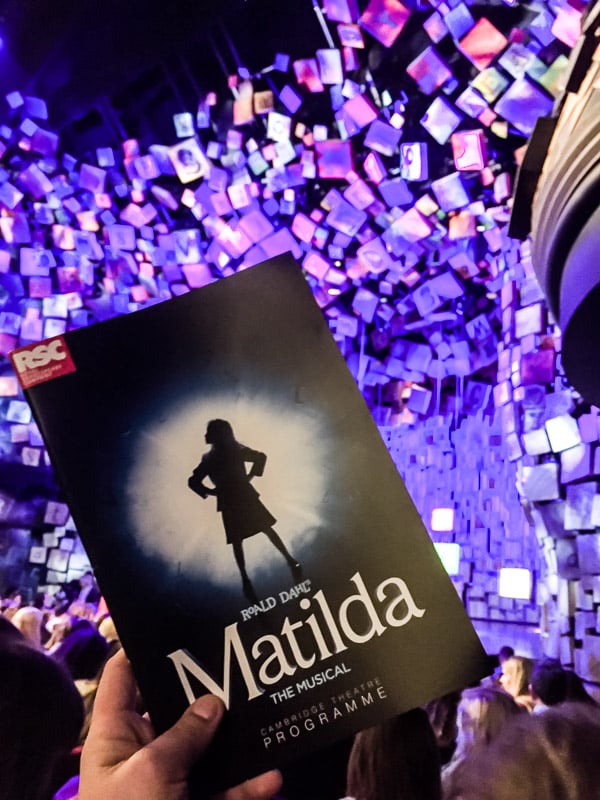
14. Try and get last minute theatre tickets
West End theatre tickets can run into triple digits, especially for the best seats at the hottest shows. Yet, there are a few ways to save money beyond the voucher websites I mentioned previously. Of course, these options aren’t ideal if you need a specific show on a particular day – for that, it’s best to accept the price and book in advance – but if you have some flexibility, consider the below.
Firstly, there are nearly always last-minute tickets up for grabs directly from the box office. These may be returns or just tickets that have been held back for various reasons. On my last visit back to London, I scored great tickets to Miss Saigon for £20 about an hour before curtain up.
Some other shows also offer a ‘lottery’ a little before the performance starts. For example, the Book of Mormon even runs a lottery every day for £20 tickets if you want to gamble daily 2.5 hours before the performance. This is a great way to enjoy London on a budget and appreciate the incredible cultural scene.
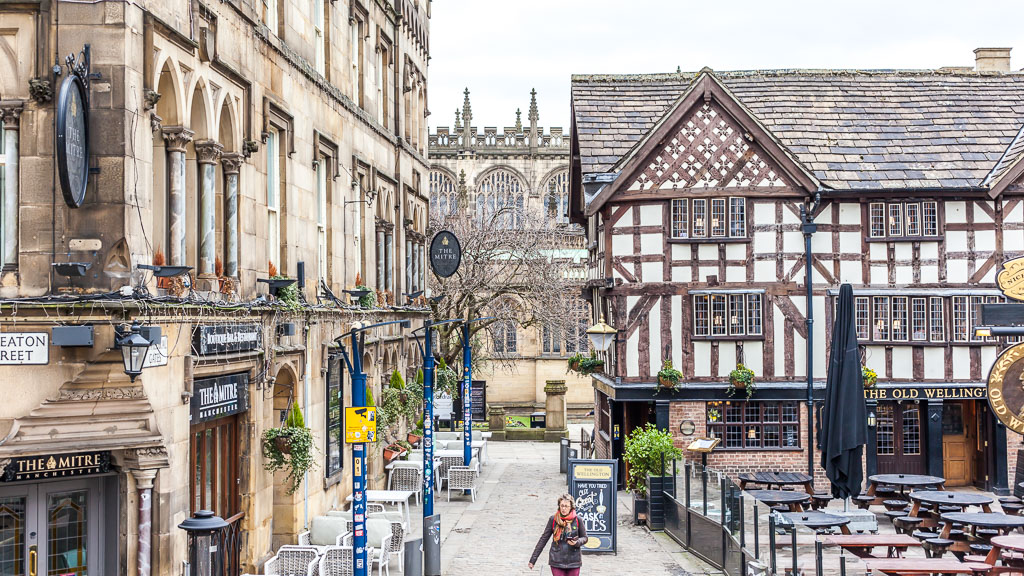
15. Book train fares in advance
This isn’t so much a London on a budget tip, but it will apply if you plan on leaving London to visit other parts of the UK, such as Cornwall’s attractions, Scotland’s capital city of Edinburgh, or the buzzing city of Manchester.
The fact is rail travel in the UK is very costly. You might think these high train prices mean excellent services, but that also isn’t always the case – sometimes a seat isn’t even guaranteed – and you may find yourself standing for much of the journey. As such, you’ll want to book in advance online.
Not only can you usually score a seat reservation this way, but you can sometimes save up to 50% or more from on-the-day ticket prices.
While individual train companies (we don’t have one rail company) allow booking on their websites, The Train Line is an excellent place to start as it will search all operators on that route and show you the best prices. However, they charge a small booking fee, so if you want to save a pound or two more, once you’ve found the deal go to the operator’s website to try and book directly.
If you plan to travel to some of the most beautiful parts of the country, such as visiting the Cotswolds, these advance fares will be your biggest money saver. Also, check out National Express, the UK’s long-distance coach company. These busses are nearly always modern, comfy, and good value – providing an additional option to reach places perhaps not served by the trains or at an even lower price.







